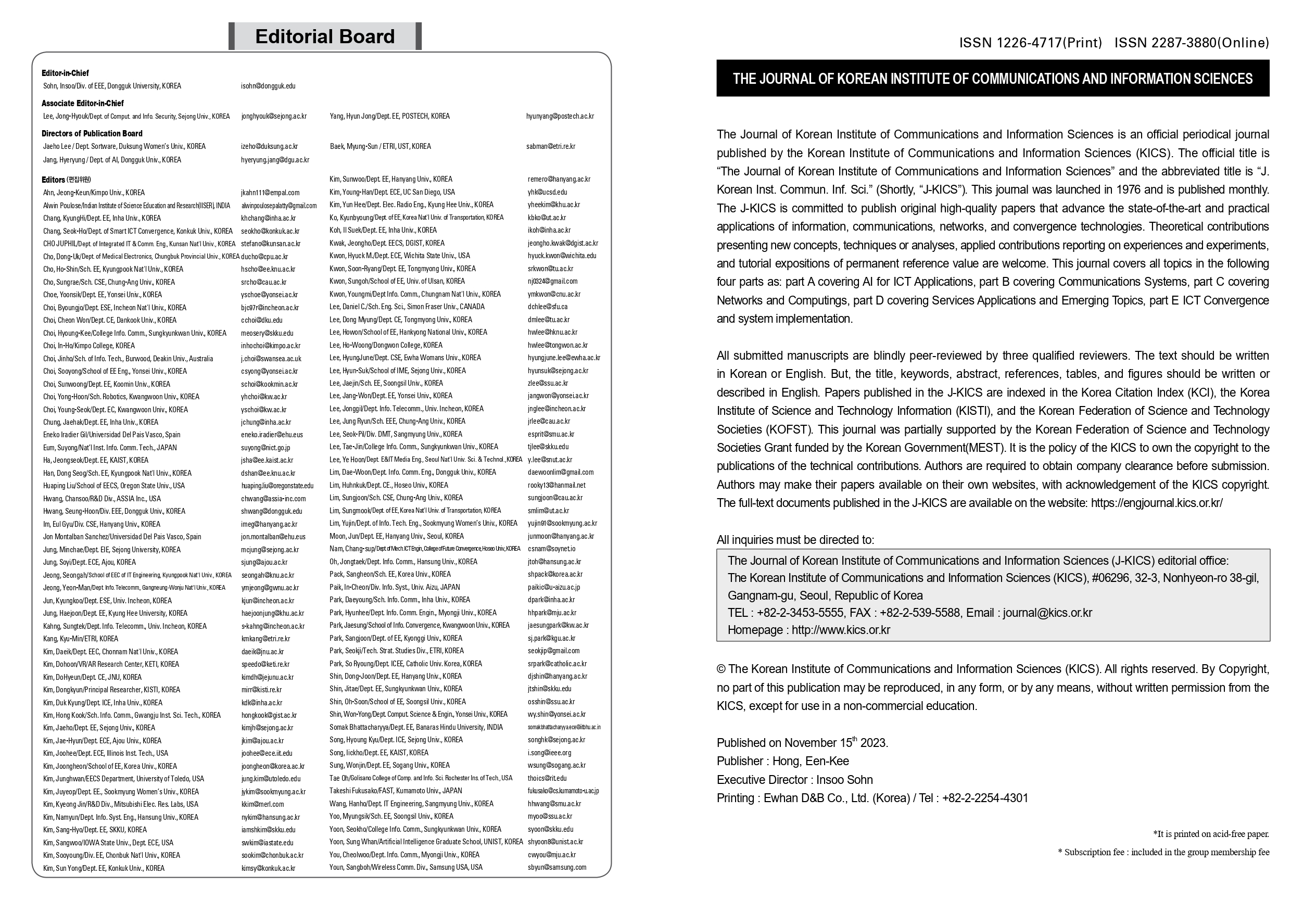Moving Human Indication Scheme Using Doppler Radar Sensor
Vol. 48, No. 11, pp. 1471-1478, Nov. 2023
 10.7840/kics.2023.48.11.1471
10.7840/kics.2023.48.11.1471
PDF Full-Text
Abstract
Statistics
Cumulative Counts from November, 2022
Multiple requests among the same browser session are counted as one view. If you mouse over a chart, the values of data points will be shown.
Multiple requests among the same browser session are counted as one view. If you mouse over a chart, the values of data points will be shown.
|
|
Cite this article
[IEEE Style]
E. Hyun, Y. Jin, J. Bae, "Moving Human Indication Scheme Using Doppler Radar Sensor," The Journal of Korean Institute of Communications and Information Sciences, vol. 48, no. 11, pp. 1471-1478, 2023. DOI: 10.7840/kics.2023.48.11.1471.
[ACM Style]
Eugin Hyun, YoungSeok Jin, and Jieun Bae. 2023. Moving Human Indication Scheme Using Doppler Radar Sensor. The Journal of Korean Institute of Communications and Information Sciences, 48, 11, (2023), 1471-1478. DOI: 10.7840/kics.2023.48.11.1471.
[KICS Style]
Eugin Hyun, YoungSeok Jin, Jieun Bae, "Moving Human Indication Scheme Using Doppler Radar Sensor," The Journal of Korean Institute of Communications and Information Sciences, vol. 48, no. 11, pp. 1471-1478, 11. 2023. (https://doi.org/10.7840/kics.2023.48.11.1471)
Vol. 48, No. 11 Index



